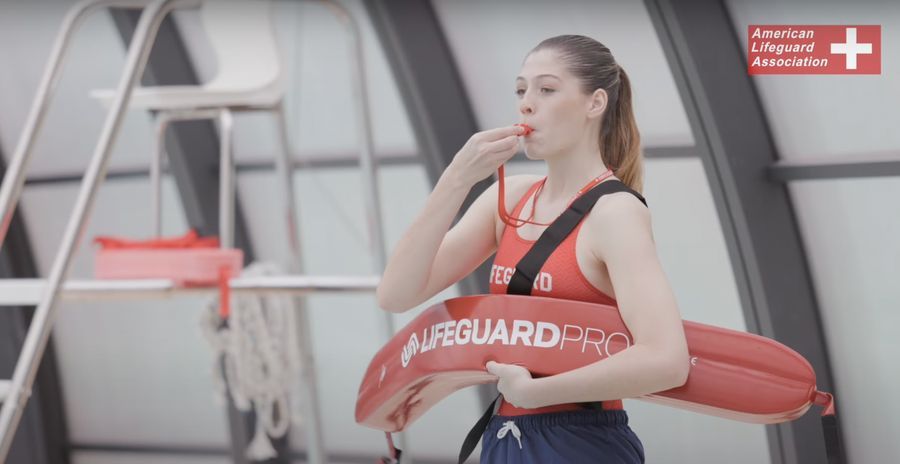Being a lifeguard is a serious responsibility that requires intensive training. Lives are literally in your hands whenever you are on duty. It’s critical that lifeguards are properly prepared for the type of body of water they will be guarding.
The American Lifeguard Association (ALA) recognizes this need and designs their lifeguard course to match specific water environments. In this article, we will explore how ALA lifeguard class is tailored for pools, lakes, beaches and other settings.
Lifeguard Courses for Pools
The majority of lifeguards work at swimming pools, whether public pools, water parks, or community centers. Due to the controlled environment of a pool, lifeguarding skills and responsibilities differ compared to open water settings. For this reason, ALA offers a separate Pool Lifeguard class.
During the Pool Lifeguarding course, trainees learn skills like[Lifeguarding] proper surveillance techniques, patron behavior management, and in-water rescues that are common in pools.
They practice timed rescues of passive and active victims from depths up to 12 feet. Pool lifeguards are also trained on pool filtration and disinfection systems to understand water quality issues. As many pools have diving boards and slides, the course covers spinal injury recognition and response as well.
Overall, the ALA Pool Lifeguarding course ensures guards are fully prepared to monitor and respond to emergencies in the controlled confines and regulations of swimming pools.
Lifeguard Courses for Lakes and Rivers
Open water areas like lakes, ponds and slow-moving rivers present unique challenges compared to pools. With less structure and varying depths, aquatic rescue requires different skills and knowledge. To address this, ALA offers Open Water Lifeguarding (H2) and Waterfront Lifeguarding (H3) courses.
In Open Water Lifeguarding, professionals learn open-water surveillance using landmarks. They practice deep water entry and rescue techniques including spinal management in water over 12 feet deep. River Lifeguarding focuses more on strong and varying currents, testing rescues of active and passive subjects downstream as well as from below the surface.
Both open water courses cover hazards like boat traffic, variability in weather and water conditions, and wildlife safety. Lifeguards are trained to make independent judgments necessary when help may be farther away. These specialized courses give guards the skills and situational awareness demanded by waterfronts and large natural bodies of water.
Lifeguard Courses for Beaches
Guarding beaches comes with its own set of considerations given fluctuating tides, waves, sun/snow exposure and other environmental factors. To suit this demanding coastal setting, ALA offers Beach Lifeguarding certification (H4).
This course covers beach hazards, preventative actions, and coastal first aid beyond traditional maritime rescue techniques. Trainees learn to identify riptides and other surf conditions to make swift water rescue decisions. Beach surveillance strategies account for changing conditions as well as variable terrain. Ocean lifeguards are drilled on spinal injury management in pounding surf.
Through extensive hands-on practice, ALA Beach Lifeguarding prepares professionals to monitor huge beach areas while handling any emergencies safely in dynamic coastal environments. Whether ocean, bay or Great Lake beaches, guards are thoroughly equipped by this specialized curriculum.
Tailored Lifeguard Courses Ensure Safety
In summary, the American Lifeguard Association understands aquatic settings require different skillsets. That’s why their four core lifeguard certifications – Pool, Open Water, Waterfront and Beach – are uniquely tailored to match each water environment.
This specialized approach to training guarantees professionals have exactly what they need, wherever they serve. ALA lifeguards can confidently keep patrons safe with the right resources suited to their facility. Customized certifications demonstrate the organization’s serious dedication to water safety through education.
Final Opinion
As the need for lifeguards continues to grow with more time spent at pools and recreational waterfronts each season, the ALA plays an invaluable role in lifeguard certification. Their commitment to curricula customized for any swimming area ensures guards are fully prepared when it matters most.
Whether patrolling pools, lakeshores or coasts, ALA-certified lifeguards maintain consistently high safety standards across all aquatic settings through environment-specific courses. This critical approach consistently produces professionals ready to respond to any water-based emergencies that arise.
